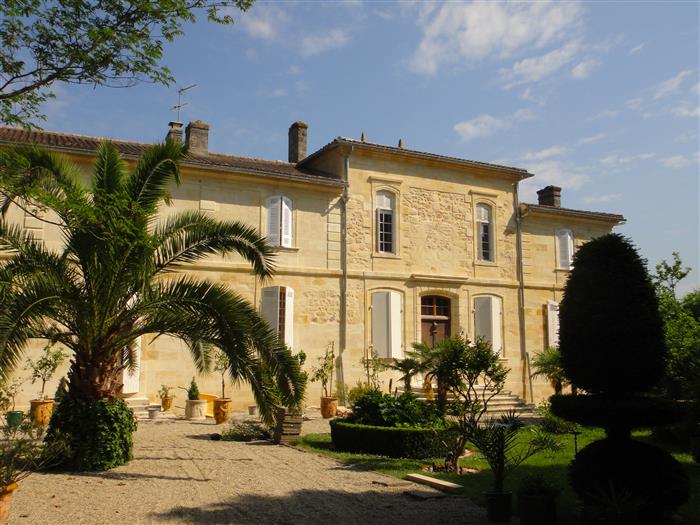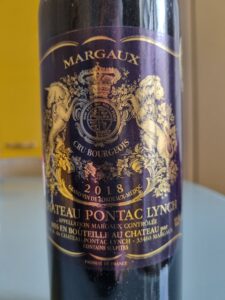Pontac Lynch. The name is so steeped in the history of the Médoc that it sounds almost made up! And yet… These two famous wine families – the Pontacs, onetime owners of Haut Brion, Lafite, Latour, Mouton, and Calon Ségur, and the Lynch family of Lynch Bages, Lynch Moussas, and Dauzac – joined forces to build a hunting lodge in Cantenac in 1750. This beautiful small “château” remains in excellent condition and is surrounded by luxurious vegetation thanks to a former owner who was also a botanist. Located just a stone’s throw from Château Margaux, it is surprising that Pontac Lynch is not better-known.

The estate was long given over to raising dairy cows (!), but its winegrowing vocation was resuscitated by the Bondon family who acquired the property in 1952. That proved to be a very wise decision since the 8 hectares of vines border on those of Palmer, Issan, and Rauzan Ségla. Château Margaux is just across the road. Given this superb location, it is amazing that the wine has maintained a rather low profile and that the vineyards haven’t been swallowed up by more illustrious neighbors.
Change is in the air. I met the 4th generation of the Bondon family, Valentine, last week at the Salon des Vignerons Indépendants. All of 25 years old, Valentine is a very go-ahead young woman. She is converting to organic viticulture, seeking advice from the famous enologist Eric Boissonot, renovating the vatroom and cellars, and opening up a bed and breakfast at the château. I will be following the developments and am willing to bet that we will be hearing a lot more about Pontac Lynch in the future.

I’ve not often had the wine, a cru bourgeois, but opened a bottle of 2018 on Sunday to reacquaint myself. Six years is not very old for a Médoc, but I uncorked the wine four hours before the meal and decanted it two hours before. The deep color showed a touch of purple indicating its relative youth. The bouquet was the best part of the wine: rich, almost Pomerol-like with a meaty side as well as hints of forest floor and truffle. Although the palate didn’t quite live up to the nose, it nevertheless showed a certain elegance, starting out rather round, then appearing on the thin side, with a few rough edges to the tannin and a slightly dry finish. Oak influence was there for sure, but well-integrated.
The upshot is that this was a very good cru bourgeois in a traditional style, entering early maturity. While not of classified growth standing, I’m convinced that, in the capable hands of Valentine, very good things are on the way. This is an estate worth following.
